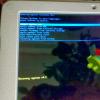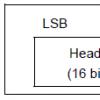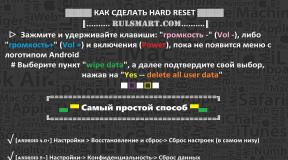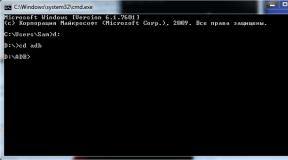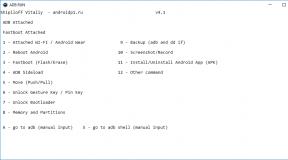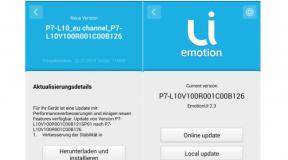ACTS Long: instructions for use. ACC Long Effervescent Tablets Possible Side Effects
ATSTS Long contains an active ingredient acetylcysteine (600 mg), as well as some additional components: sodium bicarbonate, citric acid, mannitol, sodium carbonate, ascorbic acid, , sodium citrate dihydrate, sodium saccharinate dihydrate, flavoring.
Release form
ACTS Long is produced in effervescent tablets. ACC tablets are round, white, on one side of the tablet - a risk, on the other - a smooth surface. The tablets have a blackberry flavor.
After the tablet is dissolved in water, a colorless solution with a blackberry flavor is obtained. Tablets are packed in polypropylene tubes of 6, 10 or 20 pieces.
pharmachologic effect
The agent has a mucolytic effect. Since there are sulfhydryl groups in the structure of the acetylcysteine molecule, this ensures the rupture of disulfide bonds of acidic mucopolysaccharides of sputum. As a result, the viscosity of the mucus decreases.
ACC Long is also active if the patient has purulent sputum.
Provided that the drug is used for prophylaxis, the severity and frequency of exacerbations decreases in people who are sick cystic fibrosis and chronic .
Pharmacokinetics and pharmacodynamics
Once in the body, it is absorbed quickly. Metabolism occurs in the liver, with the formation of a pharmacologically active metabolite - , also , diacetylcysteine , mixed disulfides.
When taken orally, the bioavailability level is 10% (since there is a pronounced first pass effect). The highest concentration level in is determined after 1-3 hours. It binds to plasma proteins by 50%. It is excreted from the body through the kidneys. The half-life is approximately 1 hour, if liver function is impaired, then the half-life is 8 hours. Penetrates through the placental barrier. There is no data on penetration through the BBB.
Indications for use
ACC Long is used in the following cases:
- in diseases of the respiratory system, which accompanies the formation of viscous sputum, which is difficult to separate (acute and chronic bronchitis, bronchiectasis , pneumonia , cystic fibrosis , );
- acute and chronic;
Contraindications
ACC 600 is contraindicated for use in the following cases:
- at and;
- at the age of the patient up to 14 years old;
- with high sensitivity to the constituents of the drug.
Side effects
Such side effects during treatment:
- nervous system: in rare cases - tinnitus,;
- digestive system: , vomit , , nausea , ;
- heart and blood vessels: lowering blood pressure;
- allergy: bronchospasm (in isolated cases - mainly in patients with bronchial hyperreactivity), skin rash;
- other manifestations: bleeding - in isolated cases.
Effervescent tablets ACTS Long, instructions for use (Way and dosage)
The 600 mg drug is usually prescribed to patients after 14 years of age. Instructions for application of ACC Long 600 stipulates that the patient should take 1 effervescent tablet per day, this dose corresponds to 600 mg of acetylcysteine.
The tablet is dissolved in 1 glass of water, you need to take it immediately after the tablet has dissolved. It is allowed to receive the ready-made solution for two hours in exceptional cases.
When it comes to colds, then the treatment continues for 5-7 days. If it is necessary to treat other diseases with a longer course, the duration of therapy is determined by the doctor. People with chronic bronchitis longer treatment is prescribed to prevent infections.
The drug is taken after meals.
Overdose
In case of an overdose, the following manifestations: abdominal pain, vomiting, diarrhea, nausea. Severe symptoms overdose was not observed.
In such cases, symptomatic treatment is carried out.
Interaction
In the case of the simultaneous administration of acetylcysteine and cough suppressants, due to suppression of the cough reflex, the likelihood of mucus stagnation increases. Therefore, you need to carefully combine such drugs.
If treatment with acetylcysteine and may increase vasodilating action nitroglycerin.
Acetylcysteine is not pharmaceutically compatible with a number of (cephalosporins, penicillins, , Tetracycline ) and with proteolytic.
Under the influence of acetylcysteine, the level of absorption of cephalosporins decreases, , penicillins. In this regard, it is necessary to observe the interval between taking these funds at least 2 hours.
If acetylcysteine comes into contact with rubber, metals, sulfides with a characteristic odor are formed.
Terms of sale
ACC Long can be purchased without a prescription.
Storage conditions
The storage temperature should not exceed 30 degrees, it must be stored in a dry, dark place, away from children. After the pill has been removed, you need to tightly close the tube.
Best before date
The drug is stored for 3 years.
special instructions
It is important to use ACTS Long with caution for the treatment of patients with bronchial asthma and obstructive bronchitis. In this case, it is necessary to ensure systematic monitoring of bronchial patency.
If side effects appear during therapy, you need to stop taking it and consult a specialist.
Cough is an unconditioned reflex. It helps to cleanse the respiratory tract of phlegm, mucus, bacteria, viruses and foreign bodies. A wet cough can be a real problem if the secretion is thick and difficult to clear your throat.
In order to alleviate the condition and translate the cough into a lighter one, various expectorant drugs are recommended, among them ACTS Long.
In contact with
classmates
The product is produced by a large pharmaceutical company that has long established itself in the market. High efficiency, ease of use and availability in the pharmacy chain makes effervescent ACC tablets Long is the drug of choice for cough relief. Full details are contained in the annotation.
Composition of ACTS Long 600 mg
The effectiveness of a pharmaceutical product is due to the active substances included in the composition. To obtain the required physicochemical characteristics, additional ingredients are included in the formulation. Instructions for use ACTS Long thoroughly describes the composition.
Table 1. Components of ACC Long effervescent tablets
| Name | Dosage (mg) | Action |
|---|---|---|
Active component |
||
| Acetylcysteine | 600 | Promotes liquefaction of tracheobronchial secretions, accelerates its synthesis and excretion from the lungs, promotes recovery |
Additional components |
||
| Lemon acid | 625 | Accelerates cell metabolism and improves cellular respiration, ensures dissolution due to reaction with soda and water |
| Sodium bicarbonate | 327 | Reduces the viscosity of tracheobronchial secretions, has an expectorant effect |
| Soda | 104 | Provides dissolution of effervescent tablets in water, prolongs the duration of the drug |
| Mannitol | 73 | Diuretic, has a diuretic effect |
| Vitamin C | 75 | Antioxidant, takes part in metabolism, normalizes redox processes |
| Sodium cyclamate | 31 | Sweetener |
| Milk sugar | 70 | Filler |
| Saccharin | 5 | Sweetener |
| Sodium salt of lim. acid | 0.5 | Preservative |
| Berry flavor | 40 | Gives the scent of berries |
Mechanism of action
 Effervescent tablets ACTS Long, instructions for use of which are in each package of the product, begins to act almost immediately due to the active substance - acetylstein.
Effervescent tablets ACTS Long, instructions for use of which are in each package of the product, begins to act almost immediately due to the active substance - acetylstein.
The maximum concentration in the patient's blood is observed 60–180 minutes after the effervescent tablet is consumed.
Table 2. Mechanism of action of ACC Long effervescent cough tablets
| Direction | Produced effect |
|---|---|
| Sputum | Destroys compounds of polysaccharides of tracheobronchial secretions due to the presence of highly active organic compounds. Increases the rate of formation of polymers of mucins. Promotes Thinning Mucus |
| Mucous cells | Stimulates activity, stimulates the destruction of fibrin (protein) |
| Free radicals and oxygen metabolites | Reduces activity by helping to reduce inflammation in the airways |
| Glutathione | Stimulates production, which helps to accelerate the destruction of toxic substances in the body |
ACC Long's instruction warns that acetylcysteine is able to cross the placenta into the amniotic fluid. The half-life of the drug takes approximately 60 minutes. In case of violations in the liver, the interval is prolonged 6-8 times. It is almost completely excreted by the urinary system.
Indications
Effervescent tablets ACC 600 mg instructions for use recommend for the treatment of diseases, the course of which is complicated by the release of thick tracheobronchial secretions. These include:
- , rhinitis,;
- purulent inflammation of the lung;
- diseases of the respiratory system affecting the bronchi, in acute or chronic form, including obstructive;
- cystic fibrosis;
- inflammatory diseases of the respiratory tract, etc.
Inflammation of the lungs is also known as pneumonia. It is an inflammation of the lung tissue of various etiologies. The main cause of the development of the disease is usually infection. Pneumonia can occupy both a small part and the entire lung completely. It is characterized by fever, coughing, weakness, pain in the lungs. In the absence of timely competent treatment, it can be fatal.
Instructions for use ACTS 600 recommends taking effervescent tablets for otitis media, rhinitis, tracheitis, pharyngitis, laryngitis. These diseases are expressed in inflammation of the mucous membranes of the ear, nose, trachea, pharynx, larynx, respectively. They develop as a result of viral lesions or under the influence of other pathogenic factors.

The list of indications for use, according to the instructions, includes a lung abscess. This is a destructive process that leads to the appearance of purulent formations in the lungs. The most common cause of an abscess is Staphylococcus aureus infection. The patient is discharged with an admixture of pus, there is an increase in temperature, general weakness, etc. An extremely dangerous disease requiring immediate intervention.
One of the common reasons for visiting a doctor is bronchitis. Diseases are also distinguished. Various factors lead to their occurrence, their manifestations also differ from each other.
Effervescent tablets ACTS 600 mg instructions for use (600 - the highest dosage) recommends regardless of the type. The remedy is effective in obstructive form, which is characterized not only by inflammation, but also by damage to the bronchial mucosa.
A hereditary disease that leads to pathologies of the endocrine glands is called cystic fibrosis (cystic fibrosis). The disease is widespread and leads to severe respiratory problems. Cough is detected almost immediately after birth. Gradually, it becomes more intense and is accompanied by the release of thick sputum.
The appearance of wheezing, whistling, shortness of breath, chest tightness are some of the symptoms of bronchial asthma. This disease occurs due to allergic or immunological reactions. Leads to a chronic inflammatory process in the bronchi. Asthma therapy is directed at the cause itself and at relieving symptoms. Effervescent tablets of ACC Long are suitable for thinning phlegm and stimulating its release.
You can read more about other indications for use in the instructions and ask your doctor. All of these pathologies must be treated strictly according to the recommendations of a specialist.
Instructions for the use of the effervescent tablet
Detailed information is contained in the annotation. She describes how to take ACC Long, in what quantity and for what pathologies. The tool, according to the instructions for use, has its own characteristics and contraindications.
How to take for adults?
 Effervescent tablets should be taken dissolved immediately after eating. It is important to use the resulting mixture quickly, in extreme cases, no more than 2 hours later. Instruction ACTS Long 600 recommends taking the product within a week.
Effervescent tablets should be taken dissolved immediately after eating. It is important to use the resulting mixture quickly, in extreme cases, no more than 2 hours later. Instruction ACTS Long 600 recommends taking the product within a week.
In some pathologies, it is permissible to increase the period (cystic fibrosis, inflammatory diseases of the respiratory tract, etc.). It can be used for the prevention of exacerbations in chronic diseases.
How many times a day to drink?
Ease of consumption is one of the key benefits of the drug. Effervescent tablets ACTS Long 600 mg instructions for use recommend taking one time per day, no later than 18 hours. Before going to bed, you should not drink the product.
In what water should you dissolve?
There are peculiarities of taking funds. should be added to warm boiled water. Not allowed to be mixed with tea, coffee, juice. When dissolving, it is better to use glass containers. Avoid contact with metal, rubber and oxidizing agents.
Important information for patients
The remedy is recommended to be consumed in conjunction with a large amount of liquid to enhance the mucolytic effect. Assign, according to the instructions for use, effervescent tablets ACTS Long for adults and adolescents from the age of 14. When carrying and breastfeeding, the drug can be prescribed only if the expected benefit outweighs the risk to the fetus. Contraindications include:
- individual sensitivity to the components of the drug, including lactose;
- bleeding in the lungs or blood in sputum;
- sharp peptic ulcer;
- diabetes.
What reviews does the drug receive?
 Patients who used the tablets for treatment were mostly satisfied with the effect produced. The obvious benefits of ACTS Long 600 mg include:
Patients who used the tablets for treatment were mostly satisfied with the effect produced. The obvious benefits of ACTS Long 600 mg include:
- high efficiency;
- convenient dosage form;
- fast action;
- low likelihood of developing side effects;
- availability in the pharmacy network;
- pleasant blackberry taste.
Many consider it an advantage how many times a day ACC Long is taken in case of illness. A single dose is one of the obvious advantages.
There are also a number of disadvantages:
- the remedy does not help with dry cough, and the instructions for use do not contain such information;
- the drug is quite expensive;
- there are contraindications and restrictions:
- not recommended in combination with some medicines (a number of antibiotics).
Analogs
There are many products with a similar composition on drugstore shelves. Alternatively, it is possible to use other acetylstein-based agents:
- Mukobene;
- ESPA-NATS;
- Mukomist;
- Acestin;
- etc.
An analogue of ACC Long should definitely be discussed with a specialist. The dosage and route of administration can vary significantly.
The tool is produced by the same company and has the same indications for use. Answering the question about which is better, or ACC Long, you should pay attention to their main difference - the dosage. ACC 100 mg contains similar components, but in smaller quantities. According to the instructions for use, the agent can be prescribed to children from 2 years of age. However, for adults, a single dose is not suggested.
Tablets with a lower dosage of the active substance. Recommended from 2 years old. Have similar recommendations and limitations. For adults, it is supposed to be taken 1-3 times a day.
Conclusion
- ACTS Long 600 mg is an excellent remedy for the treatment of wet cough.
- It effectively liquefies phlegm and stimulates its excretion from the lungs.
- It is quite convenient to take ACC: it is enough to dissolve the product in warm water. The pleasant blackberry taste makes therapy easy and enjoyable.
- Despite all the advantages of ACC Long, you should carefully study the instructions for use before use.
In contact with
Mucolytic drug
Active substance
Release form, composition and packaging
ACC 100
◊ Effervescent tablets white, round, flat-cylindrical, with a blackberry smell; there may be a faint sulfur odor; reconstituted solution - colorless transparent with a blackberry odor; there may be a slight sulfuric odor.
Excipients: anhydrous citric acid - 679.85 mg, - 194 mg, sodium carbonate anhydrous - 97 mg, mannitol - 65 mg, anhydrous lactose - 75 mg, ascorbic acid - 12.5 mg, sodium saccharinate - 6 mg, sodium citrate - 0.65 mg, blackberry flavor "B" - 20 mg.
20 pcs. - aluminum tubes (1) - cardboard packs.
◊ Effervescent tablets white, round, flat-cylindrical, with a line on one side, with a blackberry scent; there may be a faint sulfur odor; reconstituted solution - colorless transparent with a blackberry odor; there may be a slight sulfuric odor.
Excipients: citric acid anhydrous - 558.5 mg, sodium bicarbonate - 200 mg, sodium carbonate anhydrous - 100 mg, mannitol - 60 mg, anhydrous lactose - 70 mg, - 25 mg, sodium saccharinate - 6 mg, sodium citrate - 0.5 mg, blackberry flavor "B" - 20 mg.
20 pcs. - plastic tubes (1) - cardboard packs.
ACC Long
◊ Effervescent tablets white, round, flat-cylindrical, with a chamfer and a line on one side, with a blackberry scent; there may be a faint sulfur odor; reconstituted solution - colorless transparent with a blackberry odor; there may be a slight sulfuric odor.
Excipients: anhydrous citric acid - 625 mg, sodium bicarbonate - 327 mg, sodium carbonate - 104 mg, - 72.8 mg, lactose - 70 mg, ascorbic acid - 75 mg, sodium cyclamate - 30.75 mg, sodium saccharinate dihydrate - 5 mg, sodium citrate dihydrate - 0.45 mg, blackberry flavor "B" - 40 mg.
10 pieces. - polypropylene tubes (1) - cardboard packs.
20 pcs. - polypropylene tubes (1) - cardboard packs.
pharmachologic effect
Acetylcysteine is a derivative of the amino acid cysteine. It has a mucolytic effect, facilitates the discharge of sputum due to a direct effect on the rheological properties of sputum. The action is due to the ability to break disulfide bonds of mucopolysaccharide chains and cause depolymerization of mucoproteins in sputum, which leads to a decrease in the viscosity of sputum. The drug remains active in the presence of purulent sputum.
It has an antioxidant effect due to the ability of its reactive sulfhydryl groups (SH-groups) to bind to oxidative radicals and thus neutralize them.
In addition, acetylcysteine promotes the synthesis of glutathione, an important component of the antioxidant system and chemical detoxification of the body. The antioxidant effect of acetylcysteine increases the protection of cells against the damaging effects of free radical oxidation, inherent in an intense inflammatory response.
At preventive use acetylcysteine, there is a decrease in the frequency and severity of exacerbations in patients with chronic bronchitis and cystic fibrosis.
Pharmacokinetics
Absorption and distribution
The absorption is high. Oral bioavailability is 10%, which is due to the pronounced effect of the "first pass" through the liver. The time to reach C max in the blood is 1-3 hours.
Plasma protein binding - 50%. Penetrates the placental barrier. Data on the ability of acetylcysteine to penetrate the BBB and excreted with breast milk absent.
Metabolism and excretion
It is rapidly metabolized in the liver to form a pharmacologically active metabolite - cysteine, as well as diacetylcysteine, cystine and mixed disulfides.
It is excreted by the kidneys in the form of inactive metabolites (inorganic sulfates, diacetylcysteine). T 1/2 is about 1 hour.
Pharmacokinetics in special clinical situations
Dysfunction of the liver leads to an increase in T 1/2 to 8 hours.
Indications
- diseases of the respiratory system, accompanied by the formation of viscous difficult to separate sputum (acute and chronic bronchitis, obstructive bronchitis, tracheitis, laryngotracheitis, pneumonia, lung abscess, bronchiectasis, bronchial asthma, COPD, bronchiolitis, cystic fibrosis);
- acute and chronic sinusitis;
- otitis media.
Contraindications
- stomach ulcer and duodenum in an exacerbation phase;
- hemoptysis;
- pulmonary bleeding;
- pregnancy;
- lactation period ( breastfeeding);
- children under 14 years old (ACC Long);
- children up to 2 years old (ACC 100, ACC 200);
- lactase deficiency, lactose intolerance, glucose-galactose malabsorption;
- hypersensitivity to the components of the drug.
Carefully the drug should be used in patients with a history of gastric ulcer and duodenal ulcer; with bronchial asthma, obstructive bronchitis; hepatic and / or renal failure; histamine intolerance (long-term use of the drug should be avoided, because acetylcysteine affects the metabolism of histamine and can lead to signs of intolerance, such as headache, vasomotor rhinitis, itching); varicose veins of the esophagus; diseases of the adrenal glands; arterial hypertension.
Dosage
The drug is taken orally after meals. Effervescent tablets should be dissolved in 1 glass of water. The tablets should be taken immediately after dissolution, in exceptional cases, you can leave the ready-made solution for 2 hours. Additional liquid intake enhances the mucolytic effect of the drug.
Adults and adolescents over 14 years old it is recommended to prescribe the drug 200 mg (2 tab. ACTS 100, 1 tab. ACTS 200) 2-3 times / day, which corresponds to 400-600 mg of acetylcysteine per day, or 600 mg (ACTS Long) 1 time / day.
The drug is recommended to take 1 tab. (ACC 100) or 1/2 tab. (ACTS 200) 2-3 times / day, which corresponds to 200-300 mg of acetylcysteine per day.
At cystic fibrosischildren over the age of 6 the drug is recommended to be taken in 2 tabs. (ACC 100) or 1 tab. (ACTS 200) 3 times / day, which corresponds to 600 mg of acetylcysteine per day. Children aged 2 to 6- 1 tab. (ACC 100) or 1/2 tab. (ACTS 200) 4 times / day, which corresponds to 400 mg of acetylcysteine per day.
At short-term colds the duration of admission is 5-7 days. At chronic bronchitis and cystic fibrosis the drug should be used for a longer period of time to prevent infections.
Side effects
According to the WHO, adverse effects are classified according to their frequency of development as follows: very often (≥1 / 10), often (≥1 / 100,<1/10), нечасто (≥1/1000, <1/100), редко (≥1/10 000, <1/1000), очень редко (<10 000), частота неизвестна (частоту возникновения нельзя определить на основании имеющихся данных).
Allergic reactions: infrequently - itchy skin, rash, exanthema, urticaria, angioedema; very rarely - anaphylactic reactions up to shock, Stevens-Johnson syndrome, toxic epidermal necrolysis (Lyell's syndrome).
From the respiratory system: rarely - shortness of breath, bronchospasm (mainly in patients with bronchial hyperreactivity in bronchial asthma).
On the part of the cardiovascular system: infrequently - lowering blood pressure, tachycardia.
From the digestive system: infrequently - stomatitis, abdominal pain, nausea, vomiting, diarrhea, heartburn, dyspepsia.
On the part of the organ of hearing: infrequently - tinnitus.
Others: infrequently - headache, fever; in isolated cases - the development of bleeding as a manifestation of a hypersensitivity reaction, a decrease in platelet aggregation.
Overdose
Symptoms: in case of an erroneous or deliberate overdose, such phenomena as diarrhea, vomiting, stomach pains, heartburn, nausea are observed.
Treatment: carrying out symptomatic therapy.
Drug interactions
With the simultaneous use of acetylcysteine and antitussives, due to suppression of the cough reflex, sputum stagnation may occur.
With the simultaneous use of acetylcysteine and antibiotics for oral administration (penicillins, tetracyclines, cephalosporins, etc.), the latter may interact with the thiol group of acetylcysteine, which can lead to a decrease in antibacterial activity. Therefore, the interval between taking antibiotics and acetylcysteine should be at least 2 hours (except for cefixime and loracarbef).
Simultaneous use with vasodilators and nitroglycerin can lead to an increase in the vasodilator effect.
special instructions
In bronchial asthma and obstructive bronchitis, acetylcysteine should be prescribed with caution under the systematic monitoring of bronchial patency.
With the use of acetylcysteine, cases of severe allergic reactions such as Stevens-Johnson syndrome and Lyell's syndrome have been reported very rarely. If changes occur in the skin and mucous membranes, the patient should immediately stop taking the drug and consult a doctor.
When dissolving the drug, it is necessary to use glassware, avoid contact with metals, rubber, oxygen, easily oxidized substances.
You should not take the drug immediately before bedtime (the preferred time of admission is before 18.00).
1 effervescent tablet ACTS 100 or ACTS 200 corresponds to 0.006 XE, 1 effervescent tablet ACTS Long - 0.001 XE.
There is no need for special precautions when disposing of unused ACC effervescent tablets.
Influence on the ability to drive vehicles and use mechanisms
There are no data on the negative effect of the drug on the ability to drive vehicles and mechanisms, when used in recommended doses.
Pregnancy and lactation
Due to insufficient data, the use of the drug during pregnancy is contraindicated.
If it is necessary to use the drug during lactation, the issue of stopping breastfeeding should be resolved.
Childhood use
The use of the drug is contraindicated in children under 14 years of age (for ACC Long), in children under 2 years of age (for ACC 200).
Shelf life is 3 years.
After taking the pill, the tube should be tightly closed.
Active substance: acetylcysteine
Hexal (Germany)
Composition and form of release. 1 sachet (ACC hot drink) with 3 g of granulate for preparation of hot drinks contains acetylcysteine 200 or 600 mg; in a box of 20 and 6 sachets, respectively.
1 sachet with granulate for preparation of oral solution - 100 or 200 mg; the package contains 20 sachets.
1 effervescent tablet - 100 (ACC 100), 200 (ACC 200) or 600 (ACC long) mg; in a package of 20 (ACC 100 and ACC 200) or 10 (ACC-long) pieces.
1 ampoule (3 ml of solution) - 300 mg; in a package of 5 ampoules of 3 ml.
Pharmachologic effect. Expectorant, mucolytic. Destroys substances (acidic mucopolysaccharides), on which the viscosity of phlegm depends, increases its fluidity and facilitates separation. Increases the synthesis of endogenous antioxidants (for example, glutathione), which protect the respiratory system from the toxic effects of poisons (aldehydes, phenols, other chemical agents) and other adverse environmental factors (tobacco smoke).
Features and differences from other drugs of the group or other dosage forms. Liquefies phlegm without significantly increasing its volume. It is well absorbed when taken orally. The action develops in 30-90 minutes and lasts 2-4 hours.
Indications. Diseases proceeding with the release of viscous, thick phlegm: acute and chronic bronchitis , tracheitis , pneumonia , laryngitis , sinusitis , cystic fibrosis , tuberculosis , bronchiectasis; primary renal amyloidosis , tracheostomy, surgical operations (prevention of complications), trauma chest (prevention pneumonia), after bronchoscopy, treatment with cyclophosphamide, as an antidote (antidote) for paracetamol poisoning.
Warnings and precautions. The drug should not be taken with individual hypersensitivity or intolerance to cow's milk, children and adolescents under 14 years of age (ACC-Long), with gastric ulcer and duodenal ulcer in the acute phase, a tendency to bleeding (hemoptysis, pulmonary hemorrhage).
It is prescribed with caution to patients with diseases of the liver, kidneys and adrenal glands.
Method of administration and dosage. Inside, after eating. The contents of 1 sachet are dissolved in 1 glass of water. The solution is prepared immediately before use. Adults and children over 14 years old - the contents of one sachet (200 mg) 2-3 times a day or 600 mg 1 time a day (ACC-Long) for 4-5 days. Children from 6 to 14 years old - 200 mg 2 times a day or 100 mg 2-3 times a day, from 2 to 6 years old - 100 mg 2-3 times a day, newborns and children under 2 years old (only health indications and under medical supervision) - 10 mg / kg body weight 2 times a day. The course of treatment is 5-14 days (determined by the doctor).
For cystic fibrosis, children over the age of 6 years - 200 mg 3 times a day, from 2 to 5 years - 100 mg 4 times a day. For infants, starting from the 10th day of life, 50 mg 3 times a day. For adults weighing more than 30 kg, the dose can be increased to 800 mg / day.
With intrabronchial administration - up to 300 mg / day. Intratracheally, 1 ml of a 10% solution is injected every hour. Intramuscularly (for trauma of the respiratory tract, coma, in children's practice) for adults 1-2 ml of 10% solution 2-3 times a day, for children over 1 year old - 0.5-1 ml of 10% solution 2 times a day.
If necessary, ACC can be administered intravenously (2-5 ml of a 10% solution).
Side effects and possible complications. Gastrointestinal disorders, headache, allergic reactions. In patients with bronchial asthma and chronic obstructive bronchitis, an increase in bronchospasm is possible.
Interaction with other drugs, substances, drinks, products. Cannot be combined with antitussives (sputum stagnation in the respiratory tract is possible due to suppression of the cough reflex). Mixing with antibiotics and proteolytic enzymes should be avoided: when taken orally, the interval between antibiotics and ACC should be at least 2 hours, intramuscular injections should be done at some distance from each other.
With the simultaneous use of ACC and nitroglycerin, an increase in the effect of the latter may be observed.








